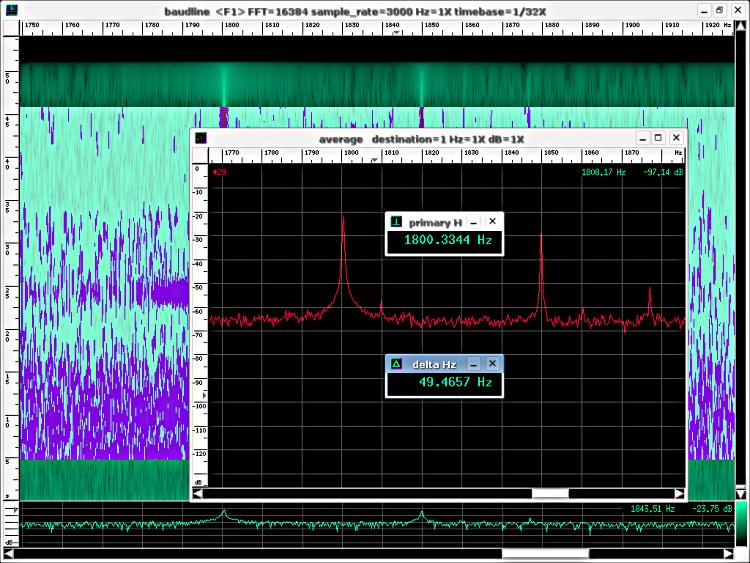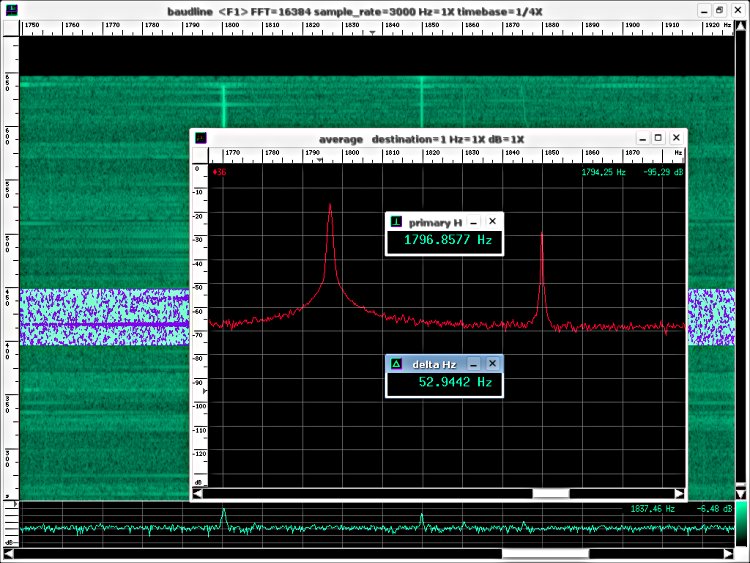Frequency Measuring Test 2005
This is the first year that I copied W1AW on all bands; that's mainly because W1AW dropped 20M and replaced it with 160M. That was a big help because in these times of low sunspots we've never heard W1AW here on 20M for the test. However, propagation in general wasn't very good, and we had a major line of electrical storms move through the day before the test. While conditions were definitely better than they had been a couple of days prior, they were still nothing to write home about.
Once again we ran multi-multi in my basement, and had five measurement positions running, each using somewhat different equipment.
Without further ado, my results:
| Band | N8UR Measurement | ARRL Measurement | Error |
| 160M | 1 050.532 | 1 050.92 | -0.388Hz -- -2.1x10-7 |
| 80M | 1 047.057 | 1 047.19 | -0.133Hz -- -3.2x10-8 |
| 40M | 1 056.512 | 1 056.81 | -0.298Hz -- -4.1x10-8 |
Note that this is the audio, not the RF, frequency, calculated by adding or subtracting (depending on the sideband used) the measured RF frequency from the announced W1AW frequency. To calculate the fractional frequency offset, I used the frequency error vs. RF carrier frequency (rather than the ratio of the audio frequencies) since that more accurately reflects what was being measured.
If you're interested, here's my ARRL Submission Letter (pdf).
My test setup this year was almost the same as last year -- the only change is that I found another HP 3586C selective voltmeter at last year's Dayton Hamvention, so I had two receivers to split time between the three bands. I dedicated one receiver to 40M, and tuned 160 and 80 with the other. I spent more time on 160 than on 80, which was probably a mistake as the 160M signal was very clean while 80 had a lot of "fuzz." Extra time might have helped get a better average on 80.
Once again I used the 3586's tracking generator to provide the reference tone (at a nominal 1850Hz). The tracking signal was looped back to the input (via an attenuator and 2-way coupler). The external frequency reference was an HP 5065A rubidium frequency standard that was monitored against GPS at the time and was within 1x10-12.
Here are some screenshots of the signals as recorded by Baudline.
160 and 80 Meters
Here is a shot of the full test on the bottom receiver, showing a clean 160M signal at the beginning and end, and a fuzzy 80M signal in the middle. The line at 1850Hz is the reference signal.If you look closely at the 160M trace, you can see some wiggles showing that even on relatively clean signals, the ionosphere plays games.

160 Meters
This is an average window of about 45 seconds of the 160M signal.

80 Meters
While the 80M signal is much fuzzier (due to propagation effects) than the 160M transmission, it was possible to get a decent measurement from even that signal. Here is an average window of about 45 seconds of the 80M signal.

40 Meters
40M is a tough band because the shortwave broadcasters throw all sorts of crud into the spectrum. I mistakenly tuned to a broadcast hetrodyne, and as a result had the receiver about 1kHz from where it should have been. Fortunately, W1AW was still in the passband, but at an audio tone of about 2850Hz rather than 1800Hz. The signal was certainly not good... but we were able to get a decent measurement from some of the data. This is an average of about 45 seconds of tone from the penultimate minute of the test. Because of the wide frequency difference, I couldn't use the "delta Hz" measurement window and have to do the math by hand.
